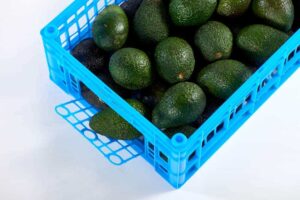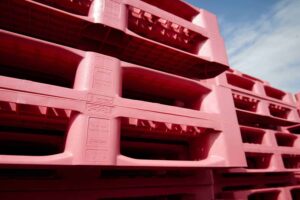
Tutto sui pallet di Plasgad
I pallet in plastica svolgono un ruolo importante nei processi di stoccaggio, spedizione e consegna, pertanto è essenziale scegliere un pallet che soddisfi pienamente le proprie esigenze. Abbiamo creato questa guida per aiutarti a fare una scelta informata tra l’ampia varietà di pallet con caratteristiche diverse:
Standard internazionali per le dimensioni dei pallet:
- I pallet da 1.200 X 800 mm sono utilizzati soprattutto nel mercato europeo.
- I pallet da 1.100 X 1.100 mm sono utilizzati soprattutto nei mercati asiatici (le dimensioni americane equivalenti sono 43 X 43 pollici).
- I pallet da 1.200 X 1.000 mm sono utilizzati in tutto il mondo (le dimensioni americane equivalenti sono 40 X 48 pollici).
- Mezzo pallet – un pallet da 800 X 600 mm, ampiamente utilizzato dalle catene di vendita al dettaglio e per la spedizione di merci di alto valore in piccole confezioni.
- Quarto di pallet – un pallet da 600 X 400 mm, un’altra opzione popolare tra le catene di vendita al dettaglio e per la spedizione di merci di alto valore in piccole confezioni.
Impilamento e stoccaggio
Il termine “impilamento” si riferisce alla capacità di un pallet di inserirsi nel pallet sottostante, una caratteristica che consente di risparmiare spazio. La capacità di impilamento si misura in base al “rapporto di risparmio di spazio”: un rapporto più alto indica un maggiore risparmio di spazio.
Come funziona?
Un rapporto di risparmio di spazio del 70% significa che, una volta annidato, il 70% dell’altezza del pallet si inserisce nel pallet sottostante, in modo che il pallet occupi solo il 30% dello spazio di stoccaggio che avrebbe altrimenti richiesto.
Struttura del pallet
Piedi del pallet
Ogni pallet è sollevato da piedi o da traverse. I pallet di dimensioni standard hanno 9 piedi. Nella maggior parte dei tipi di pallet, i piedi sono progettati per consentire ai pallet di impilarsi l’uno sull’altro, rendendo i pallet con piedi un’eccellente soluzione salvaspazio per la spedizione e lo stoccaggio.
Lo sapevi?
Una colonna di pallet impilati può far risparmiare fino all’80% dell’altezza totale dei pallet!
Traverse:
Le traverse sono travi che collegano i piedi del pallet tra loro. I pallet possono avere da tre a sei traverse, ma la configurazione più comune prevede 3 traverse parallele.
- Le traverse offrono molti vantaggi che estendono la funzionalità del pallet:
- Rendono il pallet più robusto e durevole.
- Rendono possibile la scaffalatura.
- Sono ideali per i sistemi automatizzati.
- Consentono di impilare le merci.
I pallet progettati per carichi pesanti e medi sono solitamente dotati di traverse integrate. Questi pallet vengono posizionati uno sopra l’altro e non possono essere impilati. Se hai bisogno di una soluzione che offra sia la possibilità di scaffalare o impilare le merci che di immagazzinarle in modo efficiente e senza ingombri, puoi valutare i pallet con traverse ad aggancio. Queste traverse vengono imballate separatamente dal pallet e assemblate presso la sede del cliente. Questa soluzione combina i vantaggi delle traverse con un notevole risparmio di spazio e di costi.
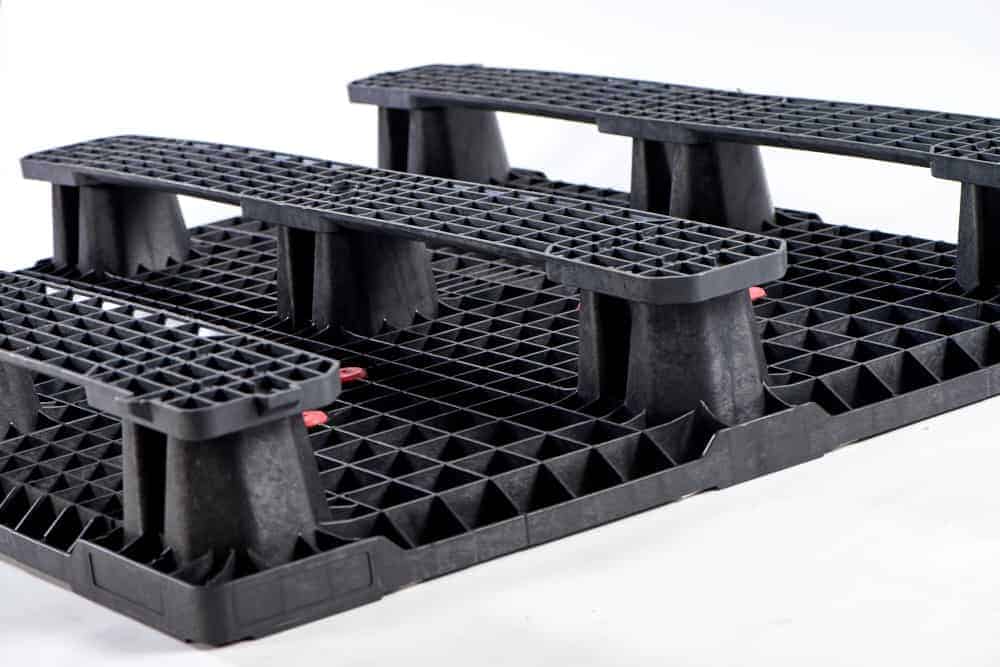
I piani ventilati hanno il vantaggio di essere leggeri ed economici.
I piani pieni offrono una maggiore robustezza e contribuiscono a mantenere la merce pulita.
- Le caratteristiche del ponte possono essere adattate alle esigenze del cliente.
- Struttura del piano chiusa
- Struttura del piano aperta
- Capacità di carico
Quando si sceglie un pallet, uno dei parametri più importanti è la sua capacità di carico massima. La capacità di carico massima viene testata in tre modalità di lavoro: statica, dinamica e a scaffale.
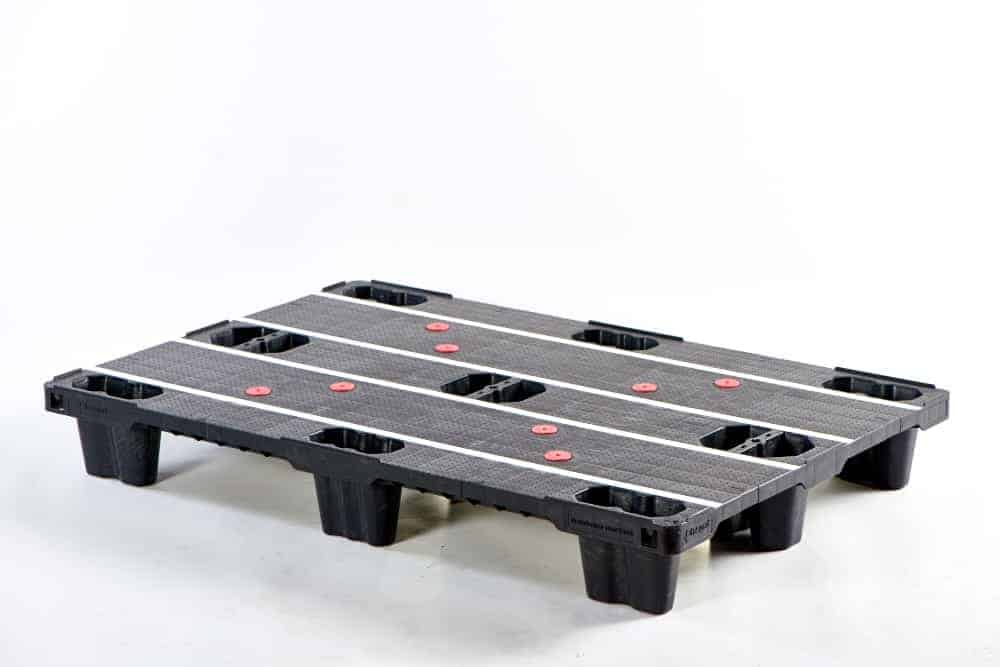
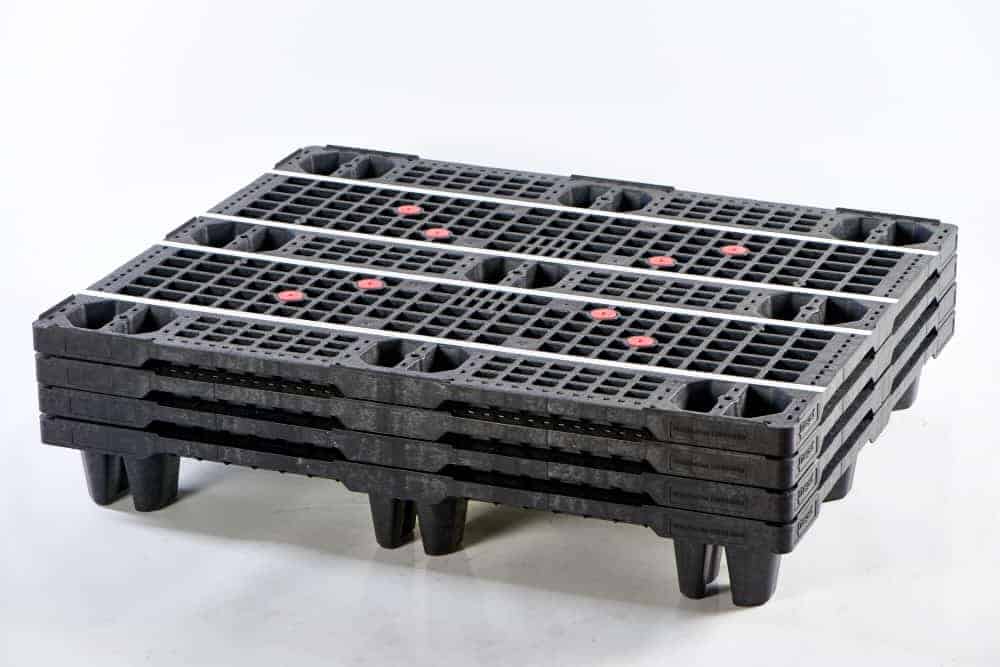
Load capacity
When choosing a pallet, one of the most important parameters is its maximum load capacity. Maximum load capacity is tested in three working modes: static, dynamic and racking.
Static load
This is the maximum weight that can be loaded on the deck when the pallet is placed on a flat floor. This mode will have a higher load capacity than the two other modes. When pallets are stacked, the static load refers to the total weight loaded onto the bottom pallet.
Dynamic load
This refers to the weight of the goods (load) placed on the deck while the pallet is being lifted by a forklift. In this mode it is important to consider how goods are packed and how their weight is distributed across the surface of the pallet. To maximize the load capacity, it is recommended to pack the goods in such a way that their weight is distributed evenly across the deck. The best way to do this is to cross-stack the crates and to use stretch wrap to secure them.
Racking
The term “Racking” refers to using pallets not just for shipping, but for storage as well. The racking system is a robust structure made of steel beams, with several levels on which pallets can be stored. This method provides high per-area storage capacity. The pallet is placed on two parallel beams. Pallets designed for racking must be exceptionally strong and durable, to prevent them from bending under the heavy load. To enhance pallets’ racking capacity, iron bars can be inserted into its plastic framework. The pallets most suitable for racking are pallets with skids.
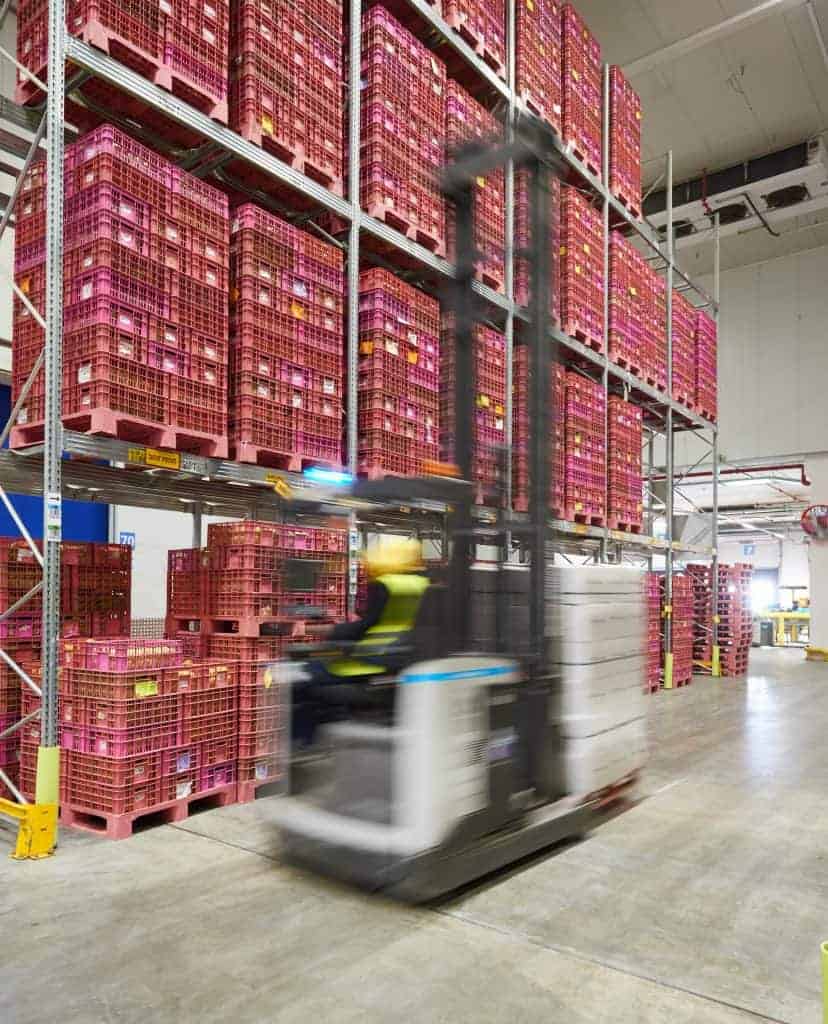
Protecting the goods
Pallets must support the goods to prevent them from slipping off during shipping, storage and delivery. We have developed a number of features to help secure the goods and prevent them from falling off.
Safety rims
The pallets with safety rims have elevated edges that prevent goods from slipping off the deck. Safety rims are also useful for stacking pallets on top of each other. They prevent the pallets from sliding and help maintain the stability of the column during shipping and storage.
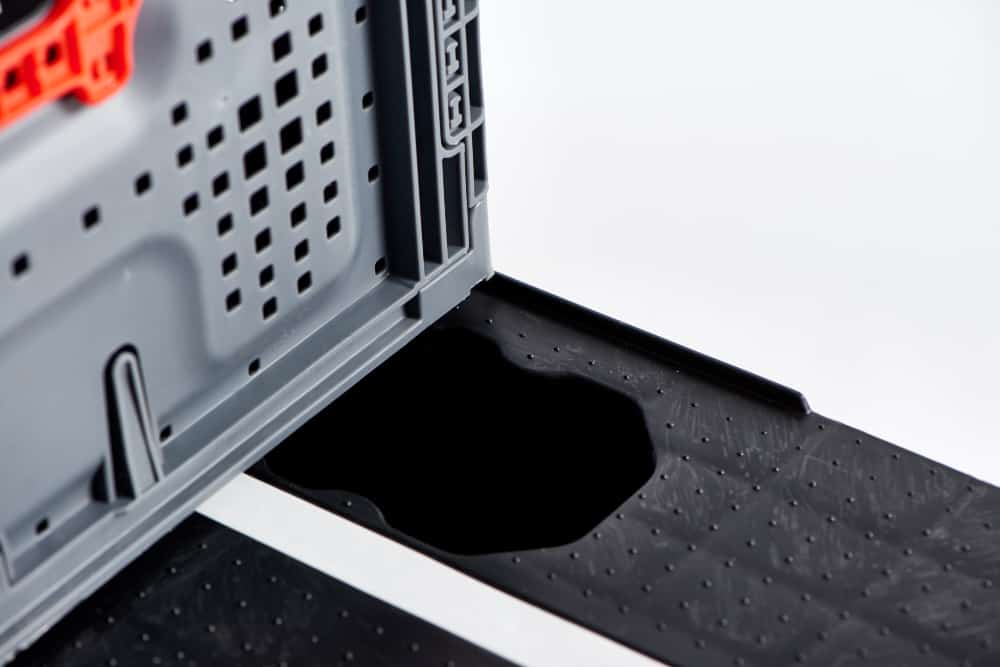
Textured surface
Small bumps are added to the top of the deck to give it a textured surface. These bumps increase the friction between the pallet and the goods, thereby reducing the movement of items placed on the deck.
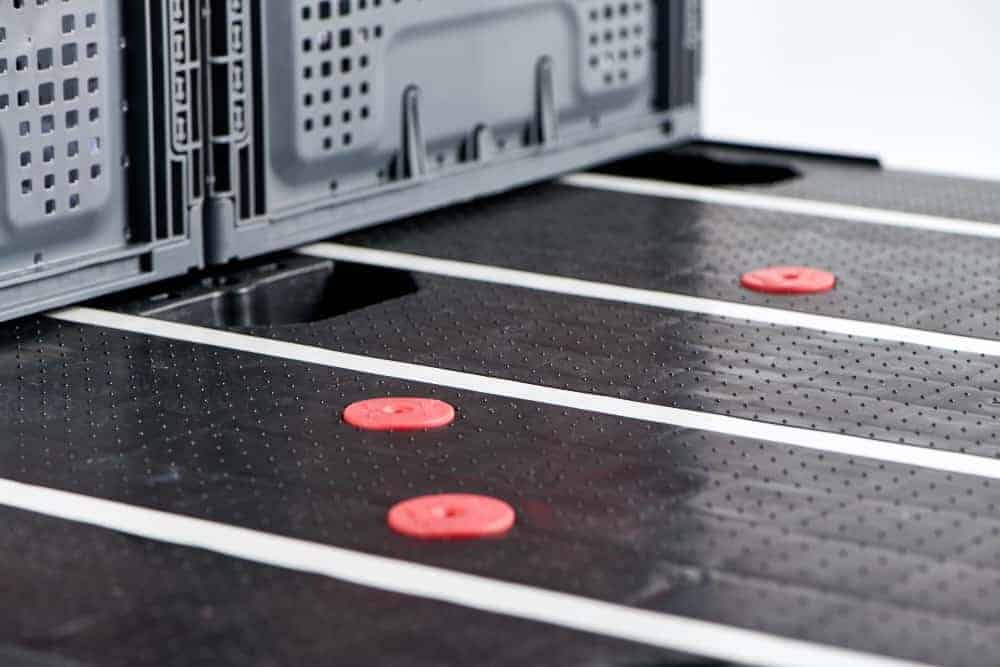
Welded anti-slip strips
These elastic friction strips that are welded to the pallet’s deck to help prevent goods from slipping.
Rubber caps (“Gems”)
Rubber caps can be inserted into the deck to increase friction, both between the goods and the pallet and between the pallet and the forks of the forklift. This solution offers maximum protection against slipping, especially for dynamic working conditions.

Fastening goods using bands or stretch wrap
Fastening goods to the deck with a band or stretch wrap helps improve the distribution of the load across the deck and keeps the goods secured. Our pallets have a unique element that enables you to quickly fasten the edges of the stretch wrap to the pallet. All the pallets have recessed edges, to help securing band straps and prevent them from moving.
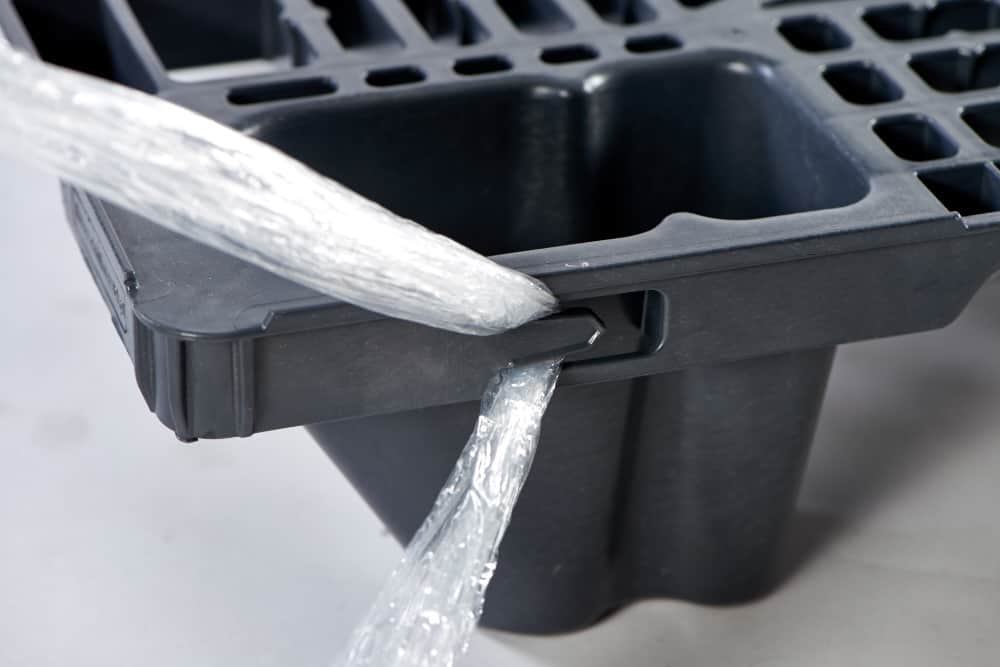
Shipping and handling the pallets
To make pallets ergonomic and easy to handle, they must be standards-compliant for handling by forklifts and automated systems.
Forklift access
We ensure that there is adequate space between the pallet’s deck and the floor and between the pallet’s feet. This way it is easy for a forklift operator to insert the forks under the pallet. Pallets with skids allow easy forklift access and are compatible with pallet jacks, thanks to the skids’ low height and the facets installed along its sides. When pallets are nested in a stack, the facet at the bottom of the deck makes it possible to easily lift a single pallet from the column using a forklift.
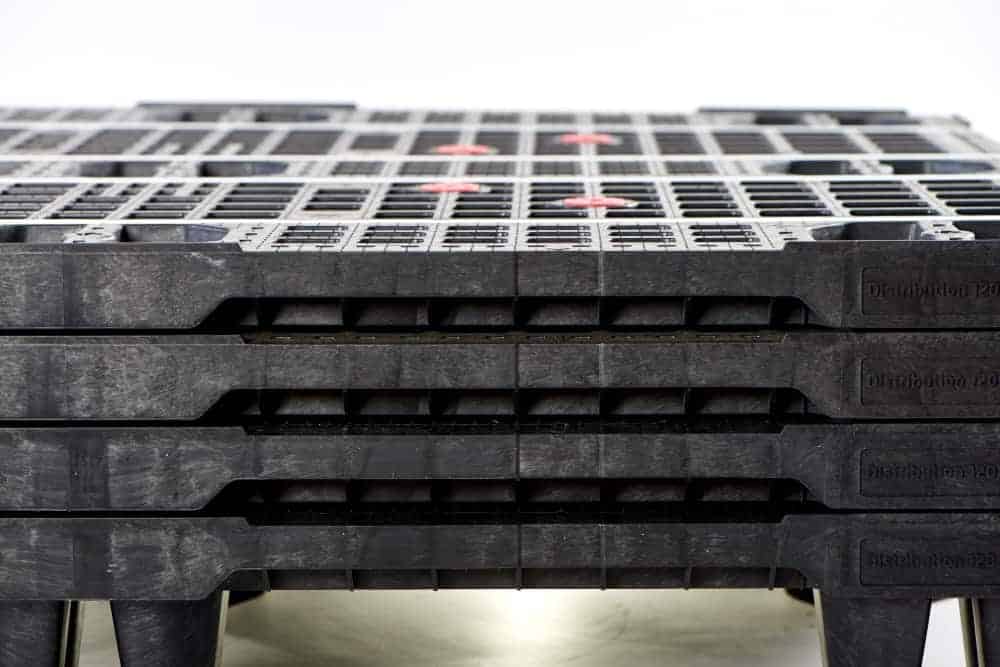
Processing by automated systems
When the pallets are expected to be processed by automated systems, the pallets’ properties must be customized accordingly. We can adjust the skids and the deck to meet the requirements of various automated systems, racking capabilities and automatic pallet separators.
Recycling and reusing pallets
Plasgad’s plastic pallets are manufactured from the best available raw materials, using cutting-edge technology. All our products are recyclable and are therefore especially cost-effective.
Reuse
Our pallets are exceptionally durable, they retain their quality, sturdiness and durability over time and can be reused over and over again. The pallets can be easily washed and cleaned.
Recycling
When pallets are no longer needed, you may send them to recycling facilities in your area. Alternatively, you can resell your used products to Plasgad, and we will recycle them using an advanced, environmentally-friendly process. By doing this you can save money as well as protect the environment.


